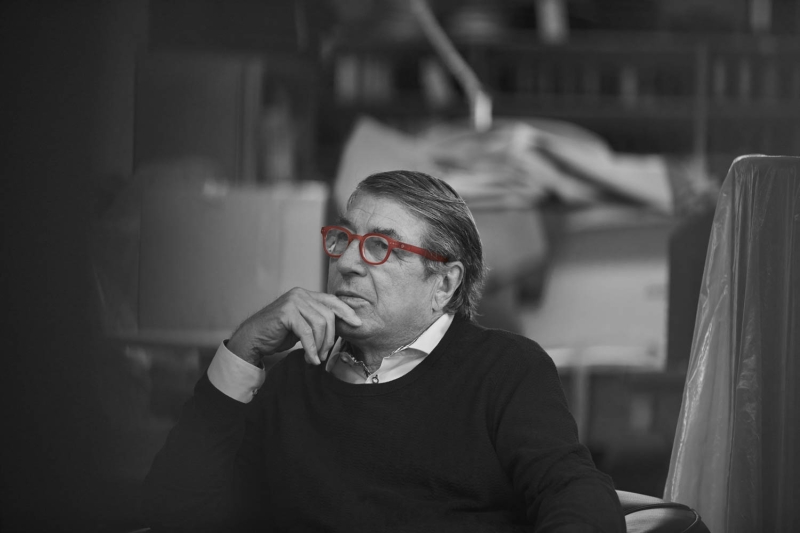German-born designer Klaus Nienkämper, founder of his Toronto-based namesake firm, recently passed away at the age of 84. A pioneer in creating sleek yet functional furnishings for commercial spaces, Nienkämper was known for championing innovative Canadian design and supporting blossoming talent.
Nelda Rodger, who served as editorial director and chief content officer of Azure before she died last year, says in the foreword of a book honoring his illustrious career, Nienkämper: 50 Years of Excellence from Design to Delivery: “If I were to describe Nienkämper, I’d choose adjectives such as modern, innovative, steadfast, progressive, design-driven… and those are the same words I’d use to describe Klaus himself.”
Klaus Nienkämper.
Exploring The Life Of Klaus Nienkämper
Nienkämper, a born innovator, was design-driven his whole life. Born in 1940 in the industrial city of Duisburg, Germany, Nienkämper grew up around his family’s antique business—a foundation that led to him to pursue the field of design. Eager to learn more about how furnishings and objects were made, he took up a design apprenticeship at an agency for Knoll International in Düsseldorf, followed by a stint in Finland with the brand Asko. He then worked with Finnish designer and sculptor Tapio Wirkkala, eventually graduating as a trained merchant with an interior and textile design background.
Inspired by design visionaries Charles Eames and Florence Knoll, Nienkämper moved to Toronto in 1960 at the age of 20, bright-eyed and ready for what the future would hold. After working a variety of jobs, which included “rear-right vacuum cleaner” at Farb’s Executive Car Wash, he pitched himself to design and manufacturing brands like J.J. Brook, eventually receiving a commission to furnish the Commissioner General’s Suite in Moshe Safdie’s Habitat complex at Expo 67, which ultimately opened doors into the Toronto design scene.
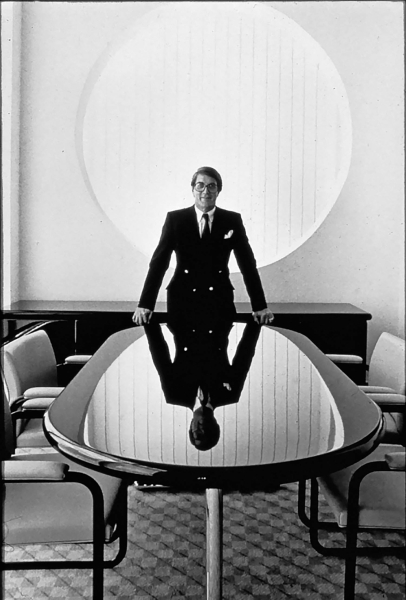
Klaus Nienkämper at the 300 King Street East showroom.
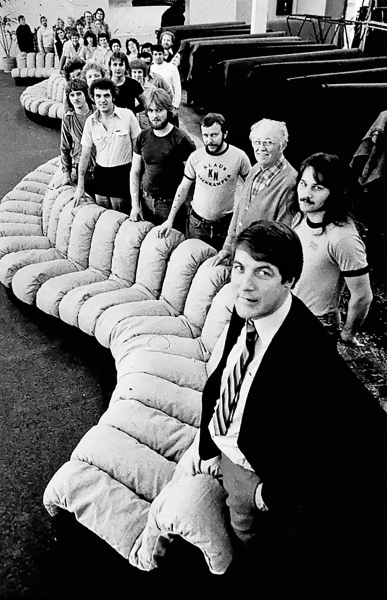
de Sede Sofa for Fort McMurray hospital, 1985.
In 1968, Nienkämper, his wife Beatrix, and friend Don Wallace, purchased and restored a Toronto building built in 1845 to house a showroom for his new venture, Nienkämper. Initially assembling and selling furniture parts in small shops around the city, the brand grew and built a factory in Scarborough, licensing pieces by classic European brands like de Sede, and collaborating with famed architects like Arthur Erickson, Ronald Thom, and Mario Bellini on a multitude of well-known commissions, including Prime Minister Pierre Trudeau’s office, Toronto’s Roy Thompson Hall, and the Embassy of Canada in Washington D.C.
Always aiming to elevate design from Toronto, Nienkämper sponsored design exhibitions at the Royal Ontario Museum and the Art Gallery of Ontario, as well as a nationwide student lounge-chair competition in 1989 to find the best emerging industrial-design talent. As a brand, Nienkämper prioritized championing designers from all over the world, becoming an agent of change.
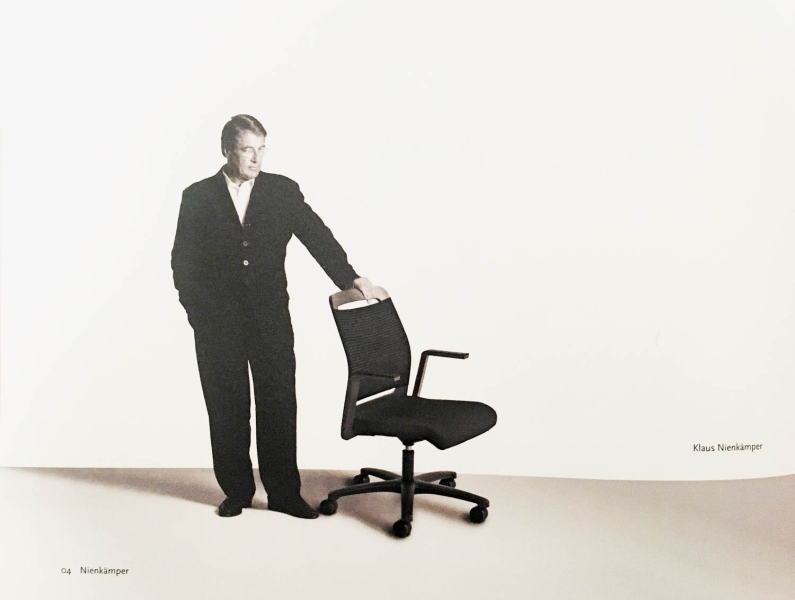
Klaus Nienkämper with Nabu chair by Bang Design.
Discovering the Brilliance of Klaus Nienkämper’s Legacy
Today the company is recognized for producing sought-after commercial and residential furniture, debuting collections at widely attended trade shows, such as NeoCon. Ever passionate about design, shortly before his passing, Nienkämper attended a sold-out screening at the Arthur Erickson Foundation for the film Arthur Erickson: Beauty Between the Lines, which he appeared in and helped sponsor. Nienkämper’s remarkable journey from a young apprentice in Germany to a visionary entrepreneur in Toronto leaves a legacy that continues to shape the world of contemporary furniture and inspire generations to come.
Nienkämper is survived by his wife Beatrix, son Klaus II, and daughters Ottilie and Rebecca.
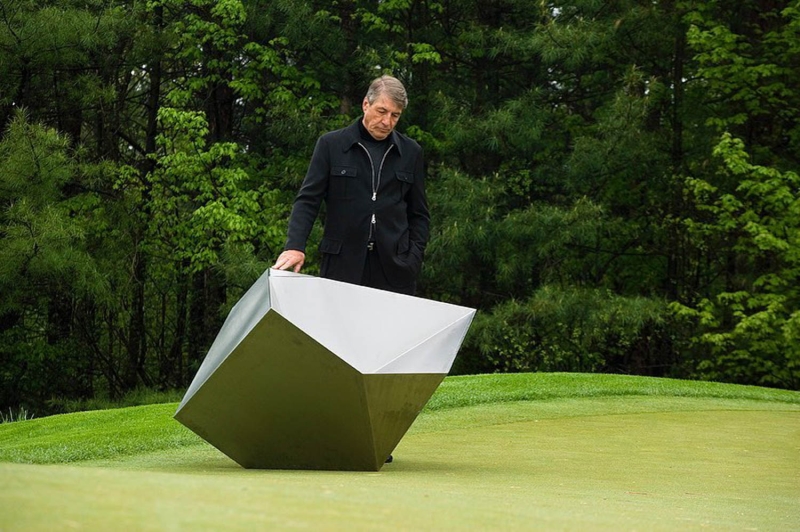
Klaus Nienkämper with the Spirit House Chair, designed by Daniel Libeskind for the Royal Ontario Museum.
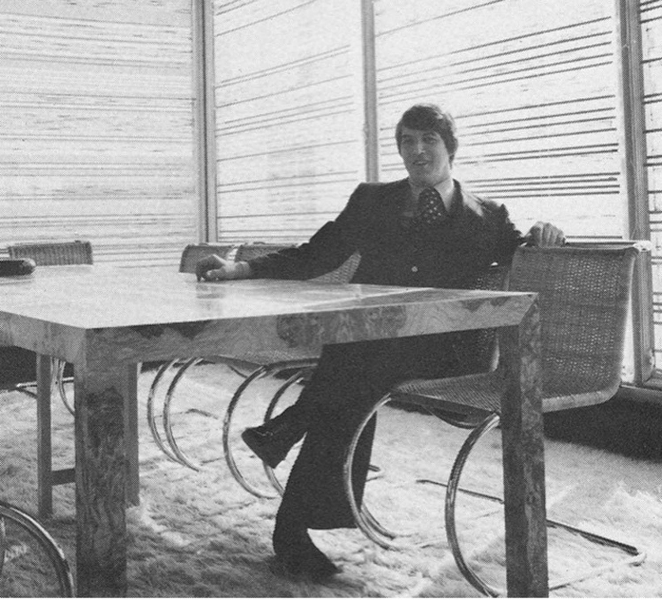
Klaus Nienkämper in the 1970s.
